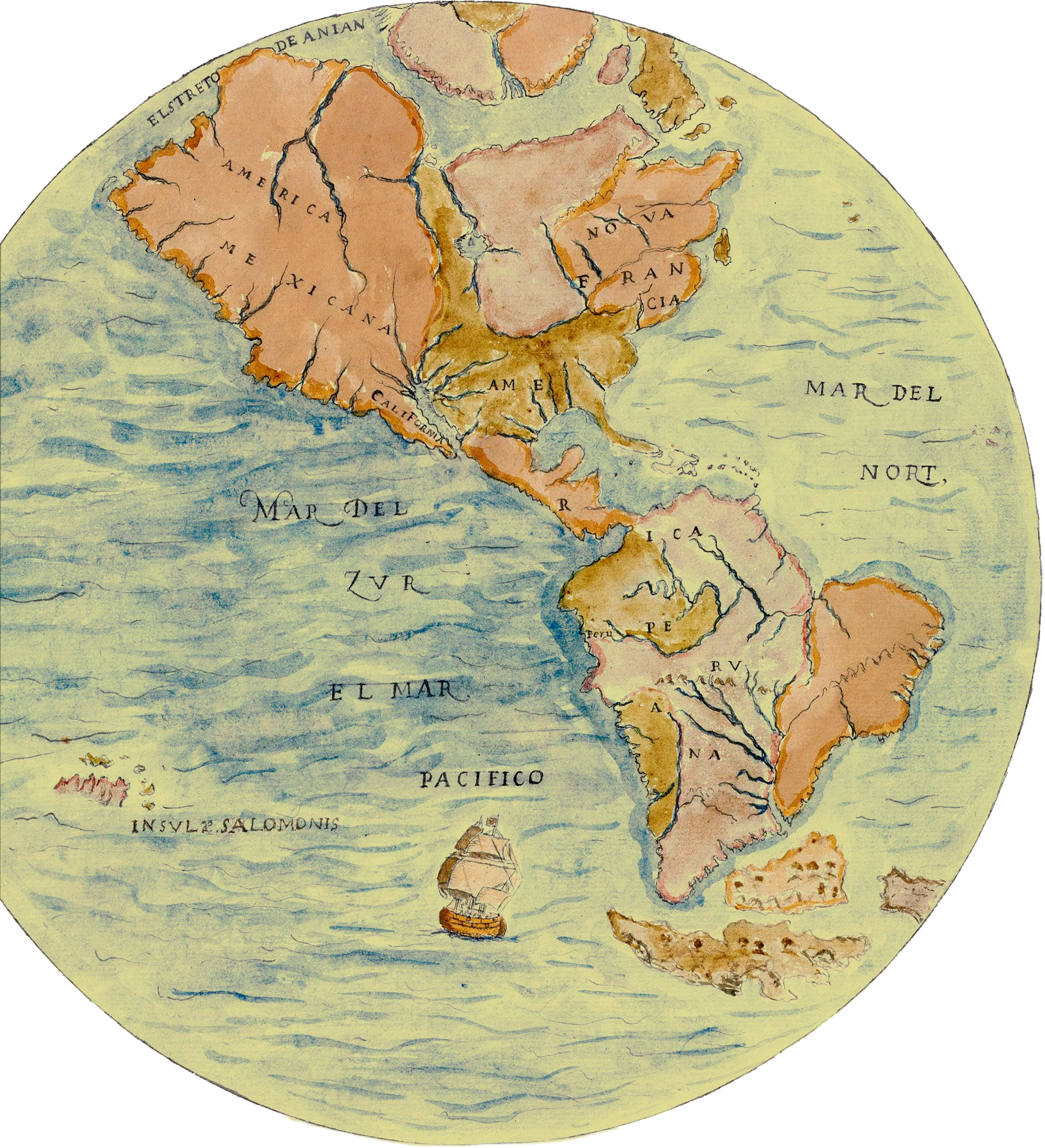Fleets & routes
The Spanish treasure fleets that sailed across the so-called Carrera de Indias —the West Indies Run— did much more than just transport products, people and animals. They became a vehicle for the ideas, customs, trends and technological advances of their time. The cities of Seville, Cadiz, Santo Domingo, Havana, Cartagena, Veracruz, Acapulco, San Agustin, Lima, Guayaquil and Manila were linked by endless seas and oceans, with their storms, naval battles and terrible shipwrecks.
The development of the necessary infrastructure and systems that allowed thousands of ships to sail the world’s oceans in an organized and safe way represented a huge undertaking involving significant economic, scientific and logistic efforts without precedent in history. The motivation behind the endeavor to establish this complex system was essentially the gold and silver obtained from the mines in New Spain and Peru, as well as other commercial products that became indispensable for European and American consumption.
The Carrera de Indias (the West Indies Trade Route) was one of the most important developments in the early modern period. It had a decisive influence on the globalization of the world and on the dynamization and transformation of maritime transportation, navigation, shipbuilding and the urban planning of ports.
The complex connections between different points of the world resulted in the creation of a number of fleets and navies which were organized, regulated and supervised by the Spanish Crown.
The Casa de la Contratación (House of Trade) of Seville established the convoy navigation system with the departure of two annual fleets, one in January and another one in August. However, there were many changes and irregularities in their departure dates.
